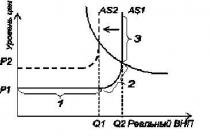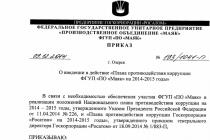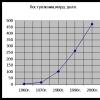In accordance with Art. 816 of the Civil Code of the Russian Federation, a bond is recognized as a security that certifies the right of its holder to receive from the person who issued the bond within the period specified by it nominal value bonds or other property equivalent.
The bond also provides its holder with the right to receive a fixed percentage of the nominal value of the bond or other property rights.
Thus, the bond includes two main elements:
the issuer's obligation to return to the bondholder after the agreed period the amount indicated on the face of the bond;
the issuer's obligation to pay the bondholder a fixed income in the form of a percentage of its face value or other property equivalent.
The difference between stocks and bonds is as follows:
with the help of shares the authorized capital of a joint-stock company is formed, and with the help of bonds - borrowed capital;
shares can be issued only by joint-stock companies, and bonds - by other businesses, and not only businesses (for example, the Russian Federation, its constituent entities, municipalities) subjects;
Bonds, unlike shares, have a limited circulation period, after which they are redeemed. The share remains valid for the entire period of activity of the joint-stock company;
bonds have an advantage over shares in the exercise of the property rights of their owners. If the question arises about the payment of interest on bonds and dividends on shares, then interest is paid first and only then dividends;
upon liquidation of a joint stock company, shareholders receive only that part of the property that will remain after the payment of all debts, including bond issues;
shares provide their owners with a certain amount of rights, including the right to participate in the management of the issuing company; bonds, being a loan instrument, do not provide such a right.
By issuing bonds, funds are mobilized by the government, various government agencies and organs local government. Companies also resort to organizing and placing bonded loans when they need additional financial resources.
The issue of bonds has certain attractive features for the issuing company: through their placement, additional resources can be mobilized without the threat of their holders interfering in the management of the financial and economic activities of the borrower.
In the Civil Code of the Russian Federation, the issue and placement of bonds is considered as a way to conclude a loan agreement (Article 816 of the Civil Code of the Russian Federation). The right to issue bonds can only be granted to creditworthy issuers.
Bonds have a nominal (nominal) and market price. The par value of a bond is printed on the bond itself and indicates the amount that is borrowed and must be repaid at the end of the bond's term. The nominal price is the base value for calculating the income generated by the bond. The interest on the bond is set to the par value, the increase (decrease) in the value of the bond is calculated as the difference between the par value at which the bond will be repaid and the purchase price of the bond.
If for shares the nominal value is a rather conditional value, shares are sold and bought mainly at the market price, then for bonds the nominal price is a very important parameter, the value of which does not change throughout the entire term of the bond issue. It is at the initially fixed par value that the bonds will be redeemed at the end of their circulation period.
From the moment bonds are issued until maturity, they are bought and sold at prices established in the market. Market price at the time of issue it may be below par, equal to par, or above par. Subsequently, the market price of bonds is determined based on the situation prevailing in the bond market and financial market in general at the time of sale, as well as from the two main elements of the bond issue itself. These elements are:
the prospect of receiving the par value of the bond upon redemption (the closer to the time of purchase of the bond its maturity date, the higher its market value);
the right to a regular fixed income (the higher the income generated by the bond, the higher its market value).
The market price of a bond also depends on a number of other conditions, the most important of which is the reliability (degree of risk) of the investment.
Since the denominations of different bonds vary significantly, there is often a need for a comparable measure of bond market prices. This indicator is the exchange rate. The bond rate is the value of the market price of the bond, expressed as a percentage of its face value.
In foreign literature, in addition to those listed (nominal and market), another cost characteristic of bonds is given - their redemption price, at which the issuer repays the bonds upon expiration of the loan term. The redemption price may coincide with the nominal price, or it may be higher than it or, conversely, lower than it. Russian legislation excludes the existence of a redemption price, since Art. 2 of the Federal Law “On the Securities Market” secures the holder’s right to receive its nominal value from the issuer. This means that bonds can only be redeemed at face value.
Bonds bring income to their holders, which consists of the following elements:
interest paid periodically;
changes in the value of the bond for the corresponding
Income from reinvestment of interest received.
Typically, interest on bonds is paid 1-2 times a year. Moreover, the more often interest payments are made, the greater the potential income the bond brings, since the interest payments received can be reinvested.
The amount of interest on bonds depends primarily on the reliability of the bonds, in other words, on who is the issuer. The more stable the issuing company and safer bond, the lower the proposed percentage. In addition, there is a relationship between interest income and the maturity of the bond: the longer the maturity date, the higher the interest should be, and vice versa.
Bonds are more reliable than other types of securities. Bond returns are less subject to cyclical fluctuations and are not as dependent on market conditions as, for example, stock returns.
Bonds can be issued commercial organizations, Russian Federation, constituent entities of the Russian Federation, local governments.
Issue of bonds and other issue-grade securities non-profit organizations permitted only in cases provided for by federal laws and other regulations legal acts Russian Federation, in the presence of security determined by the specified regulations.
The procedure for issuing bonds by joint stock companies is regulated Federal law"About joint stock companies", and societies with limited liability- Federal Law dated 02/08/98 No. 98 “On Limited Liability Companies”.
In accordance with the Federal Law “On Joint Stock Companies” and “On Limited Liability Companies”, when issuing bonds by companies, the following conditions must be met:
the nominal value of all bonds issued by the company must not exceed authorized capital company or the amount of security provided to the company by third parties for the purposes of the issue;
the issue of bonds is allowed after full payment of the authorized capital;
the issue of bonds without collateral is allowed in the third year of the company’s existence and subject to proper approval by this time of two annual balance sheets of the company;
the company does not have the right to place bonds convertible into shares of the company if the number of declared shares of the company is less than the number of shares the right to purchase which the bonds provide.
The issue and placement of bonds is carried out by decision of the board of directors of the company, unless the charter specifies a different procedure for making such a decision.
The decision to issue bonds must clearly formulate and define the conditions for their issue (nominal
17 See: Securities: Textbook / Ed. IN AND. Kolesnikova, V.S. Torkanovsky. P. 98; Securities market: Textbook / Ed. V.A. Galanova, A.I. Basova. M.: Finance and Statistics, 1996. pp. 37-41.
cash value, specified percentage of face value, etc.), form, terms and conditions of repayment of bonds.
It is possible to place bonds (except for convertible ones) in parts over several periods (tranches), but no later than one year from the date of approval of the decision on their issue. The decision on the issue of bonds placed by subscription may determine the share (not less than 75% of the issue) of bonds, in case of non-placement of which the issue of this issue will be considered failed.
Bonds, in accordance with the decision on their issue, can be redeemed as per in cash, and property. Bonds are repaid either in one lump sum or at certain times in series. If the joint stock company lacks profit, the bonds are repaid from reserve fund created in the amount provided by the company, but not less than 15% of its authorized capital. The fund is formed from net profit joint-stock company through annual contributions of at least 5%.
There is a wide variety of bonds that can be classified according to various criteria.
1. Depending on the issuer, bonds are distinguished:
government;
municipal;
corporations;
foreign.
2. Depending on the terms for which the loan is issued, the entire variety of bonds can be divided into two large groups:
2.1. Bonds with a specified maturity date, which in turn are divided into:
for short-term;
mid-term;
long-term.
The time frames limiting the listed bond groups are different for each country and are determined by the legislation in force in that country and established practice. For example, in the United States, short-term bonds usually include bonds with a circulation period of 1 to 3 years, medium-term bonds - from 3 to 7 years, and long-term bonds - over 7 years. Russian legislation contains instructions on the maturity of only government debt obligations.
2.2. Bonds without a fixed maturity include:
unlimited;
callable bonds - can be called (recalled) by the issuer before the maturity date. When issuing bonds, the issuer sets the conditions for such demand: at par or with a premium;
rights bonds early repayment- provide the investor with the right to return the bond to the issuer before maturity and receive the nominal value for it;
renewable bonds - provide the investor with the right to extend the maturity date and continue to receive interest during this period;
deferred bonds - give the issuer the right to defer repayment.
3. Depending on the method of designating the owner of the bond, there may be:
registered, the ownership of which is confirmed by entering the owner’s name in the text of the bond and in the register maintained by the issuer. Lost registered bonds are renewed by the company for a certain fee;
to bearer, the ownership of which is confirmed by simple presentation of the bond. The rights of the owner of a lost bearer bond are restored by the court in the manner established by the civil procedural legislation of the Russian Federation.
A bearer bond usually has a coupon sheet, consisting of several coupons, on the basis of which interest is paid. To receive the next interest payment, the bond owner presents one of the coupons for payment (the coupon is tear-off coupon, on which the interest rate is printed).
The coupon rate, that is, a predetermined percentage of the nominal value that the owner of the bond is entitled to receive and which the issuer undertakes to pay, is set by the latter per year. At the same time, the coupon rate can be paid more often, for example, once every six months, once a quarter.
By payment method coupon income bonds are divided:
For bonds with a fixed coupon rate;
bonds with a floating coupon rate, when the coupon rate depends on the level of bank interest;
bonds with a uniformly increasing coupon rate over the years of the loan. Such bonds are also called indexed; they are usually issued in conditions of inflation;
bonds with a minimum or zero coupon (small-interest or interest-free bonds). The market price for such bonds is set below the nominal price, that is, it implies a discount. The income on these bonds is paid at maturity at par value and represents the difference between the par price and the market price;
bonds with payment at option. The owner of this bond can receive income both in the form of coupon income and bonds of a new issue;
mixed type bonds. For part of the term of the bond loan, the owner of the bond receives income at a fixed coupon rate, and for part of the term - at a floating rate.
4. According to the purposes of the bond loan, bonds are divided:
For ordinary ones, issued to refinance the issuer’s existing debt or to attract additional financial resources, which will be used for various numerous events;
Targeted funds, the proceeds from the sale of which are used to finance specific investment projects or specific activities (for example, building a bridge, installing a telephone network, etc.).
5. According to the method of repayment of the face value there can be:
bonds, the par value of which is repaid in a one-time payment;
bonds with repayment distributed over time, when a certain portion of the par value is repaid over a certain period of time;
bonds with sequential repayment of a fixed share of the total number of bonds (lottery or circulation loans).
6. Depending on what payments are made by the issuer on a bond issue, there are:
bonds for which only interest payments are made and capital is not returned; more precisely, the issuer indicates the possibility of their redemption without committing itself to a specific period. This group of perpetual loan bonds includes, for example, English consoles, issued in the middle of the 18th century and still in circulation;
bonds that only return capital at face value but do not pay interest. These are so-called zero coupon bonds;
bonds on which no interest is paid until the bond matures, and at maturity the investor receives the face value of the bond and the total interest income. Such bonds include savings certificates E series, produced in the USA;
19 See: Ibid. pp. 53-55.
20 See: Securities: Textbook / Ed. IN AND. Kolesnikova, V.S. Torkanovsky. P. 105.
bonds for which capital is returned at face value, and interest payment is not guaranteed and is directly dependent on the performance of the issuing company, that is, on whether the company makes a profit or not;
bonds that entitle their owners to receive periodic payments fixed income and the nominal value of the bond - in the future, at its maturity. This type of bond is most common in modern practice In all countries.
7. According to the nature of circulation, bonds are:
non-convertible;
convertible, giving their owner the right to exchange them for shares of the same issuer (both ordinary and preferred) at a certain price and in certain period. The conversion ratio and conversion price are important to holders of convertible bonds. The conversion ratio shows how many shares can be received in exchange for such a bond. A conversion ratio of 10:1 means that when you convert one bond you can get 10 shares. The conversion price is the ratio of the nominal price of the bond, for example 100,000 rubles, to the conversion percentage (10) and in this case equals 10,000 rubles.
8. Depending on the security, bonds are divided into two classes:
8.1. Secured by collateral:
Secured by physical assets: in the form of property or other property rights; in the form of equipment (bonds with such collateral are most often issued transport organizations, which use ships, airplanes, etc. as collateral).
Bonds secured by physical assets (both physical property and equipment) include: first mortgage bonds; second mortgage bonds, or bonds with a second mortgage.
Second mortgage bonds are in second place after first mortgages and are also called general mortgage bonds;
secured bonds stock securities- are secured by securities of any other company (not the issuer) owned by the issuer;
bonds secured by a pool of mortgages (mortgages). These same bonds are issued by a lender that holds a pool of mortgages against the real estate loans it has issued as collateral. The receipt of payments on these loans is the source of repayment and interest payments on the bond loan secured by the pool of mortgages.
8.2. Unsecured by collateral:
bonds that are not secured by any tangible assets. They are backed by the company's promise to pay interest and repay the entire loan amount upon maturity;
bonds for a specific type of income of the issuer. On these bonds, the issuer agrees to pay interest and repay the loan out of some specified proceeds;
bonds for a specific investment project. Funds received from the sale of these bonds are used by the issuer to finance any investment project. The issuer uses the income received from the implementation of this project to repay the loan and pay interest;
guaranteed bonds. Bonds are not secured by collateral, but the fulfillment of loan obligations is guaranteed not by the issuing company, but by other companies. Most often, the guarantor is a company that is stronger from an economic point of view, which makes these bonds more reliable;
bonds with distributed or transferred liability. The obligations under these bonds are this loan either distributed among a certain number of companies, including the issuer, or taken over entirely by other companies, excluding the issuer;
Insured bonds. The issuing company insures this bond loan with a private insurance company in case any difficulties arise in fulfilling obligations under this loan.
9. Depending on the degree of investment protection, investors are distinguished:
investment-worthy bonds are reliable bonds issued by companies with a solid reputation and good security;
waste paper bonds of a speculative nature17.
In cases provided by law or other legal acts, a loan agreement can be concluded by issuing and selling bonds.
A bond is a security that certifies the right of its holder to receive from the person who issued the bond, within the period specified by it, the nominal value of the bond or other property equivalent. The bond also provides its holder with the right to receive a fixed percentage of the nominal value of the bond or other property rights.
The rules of this paragraph apply to the relationship between the person who issued the bond and its holder to the extent that otherwise is not provided by law or in the manner established by it.
Commentary on Article 816 of the Civil Code of the Russian Federation
1. Bond loans are formalized by the borrower issuing securities - bonds. Purchasing a bond means concluding a loan agreement between the issuer-borrower and the bondholder-lender. A bond is a causal security - it does not create a new claim, but only certifies the existence of a loan relationship between the issuer and the bondholder.
A bond loan can be challenged due to lack of money by the bondholder-lender (Article 812 of the Civil Code). However, such a challenge is not permitted against a bona fide bondholder.
2. Bonds are classified as issue-grade securities and, therefore, are placed in issues (series), i.e. a set of securities that have the same terms for their redemption (amount, interest rate, term) regardless of the time of acquisition of the security (Article 2 of the Law on the Securities Market). Bonds can be registered or bearer. About bonds government loans see comment. to Art. 817 Civil Code.
3. The issue of bonds is permitted in cases provided for by law or other legal acts (see, for example, Article 33 of the Law on Joint Stock Companies and Article 31 of the Law on Limited Liability Companies).
4. In para. 2 comments Art. lists the rights that can certify bonds. The bondholder receives income in the form of interest, discount or other property provision (for example, winnings). A discount is a positive difference between the face amount of a bond and the amount for which the bond was purchased.
5. As follows from paragraph. 2 and 3 comments. Art., the specificity of a bonded loan consists of: 1) a special form of concluding an agreement (issuing a bond against receiving a borrowed amount); 2) the need to indicate the loan repayment period (the prescription of paragraph 2, paragraph 1, Article 810 of the Civil Code does not apply); 3) the need to indicate the interest rate if the loan is interest-bearing (the prescription of paragraph 1 of Article 809 of the Civil Code does not apply).
Full text of Art. 816 of the Civil Code of the Russian Federation with comments. New current edition with additions for 2019. Legal advice on Article 816 of the Civil Code of the Russian Federation.
In cases provided for by law or other legal acts, a loan agreement may be concluded by issuing and selling bonds. A bond is a security that certifies the right of its holder to receive from the person who issued the bond, within the period specified by it, the nominal value of the bond or other property equivalent. The bond also provides its holder with the right to receive a fixed percentage of the nominal value of the bond or other property rights. The rules of this paragraph apply to relations between the person who issued the bond and its holder to the extent that otherwise is not provided by law or in the manner established by it.
Commentary on Article 816 of the Civil Code of the Russian Federation
1. As follows from the commented article, bonded loans are formalized by the borrower issuing securities - bonds. Purchasing a bond means concluding a loan agreement between the issuer-borrower and the lender. A bond is a causal security - it does not create a new claim, but only certifies the existence of a loan relationship between the issuer and the owner of the bond.
Bonds are classified as equity securities and, therefore, are placed in issues (series), i.e. a set of securities that have the same terms of repayment (amount, interest rate, term) regardless of the time of acquisition of the security.
Bonds can be registered or bearer. The issue of bonds is permitted in cases provided for by law or other legal acts (see, for example, Article 33 of the Federal Law of December 26, 1995 N 208-FZ “On Joint-Stock Companies” and Article 31 of the Federal Law of February 8, 1998 N 14-FZ “On limited liability companies").
Paragraph 2 of the commented article lists the rights that can certify bonds. The bondholder receives income in the form of interest, discount or other property provision (for example, winnings). A discount is a positive difference between the face amount of a bond and the amount for which the bond was purchased.
As follows from paragraphs 2 and 3 of the commented article, the specifics of a bonded loan consist in a special form of concluding an agreement, the need to indicate the loan repayment period (the regulation does not apply) and the need to indicate the interest rate if the loan is interest-bearing.
IN judicial practice a position has emerged that specifies paragraph 3 of the commented article, according to which the provisions apply to relations for the issue and sale of bonds, according to which interest under a loan agreement, on general rule, are paid until the day the loan amount is repaid.
2. Applicable law:
- Federal Law dated April 22, 1996 N 39-FZ “On the Securities Market”;
- Federal Law dated 02/08/98 N 14-FZ “On Limited Liability Companies”;
- Federal Law dated December 26, 1995 N 208-FZ “On Joint-Stock Companies”;
- Regulation of the Bank of Russia dated August 11, 2014 N 428-P.
3. Judicial practice:
- resolution of the Federal Antimonopoly Service of the Moscow District dated July 23, 2013 N F05-5245/12 in case N A40-61919/2011;
- resolution of the Federal Antimonopoly Service of the Moscow District dated August 24, 2011 N F05-13442/10 in case N A40-44422/2010;
- resolution of the Federal Antimonopoly Service of the Moscow District dated June 14, 2011 N F05-3840/11 in case N A40-90017/2010;
- ruling of the Ninth Arbitration Court court of appeal dated 03.12.2010 N 09AP-27490/2010;
- resolution of the Federal Antimonopoly Service of the Moscow District dated December 31, 2010 N KG-A40/16973-10 in case No. A40-28449/10-87-207
- Resolution of the Ninth Arbitration Court of Appeal dated June 20, 2012 N 09AP-14253/12;
- Resolution of the Seventeenth Arbitration Court of Appeal dated 09.08.2011 N 17AP-843/10.
New edition of Art. 816 Civil Code of the Russian Federation
In cases provided for by law or other legal acts, a loan agreement may be concluded by issuing and selling bonds.
A bond is a security that certifies the right of its holder to receive from the person who issued the bond, within the period specified by it, the nominal value of the bond or other property equivalent. The bond also provides its holder with the right to receive a fixed percentage of the nominal value of the bond or other property rights.
The rules of this paragraph apply to the relationship between the person who issued the bond and its holder to the extent that otherwise is not provided by law or in the manner established by it.
Commentary to Art. 816 Civil Code of the Russian Federation
1. Like a bill, a bond is a security.
Special law.
Federal Law No. 39-FZ of April 22, 1996 “On the Securities Market” determines that a bond is an issue-grade security that secures the right of its owner to receive from the issuer of the bond within the period specified in it its par value or other property equivalent. A bond may also provide for the right of its owner to receive a fixed percentage of the nominal value of the bond or other property rights. Bond income is interest and (or) discount.
2. Bonds are classified:
a) state;
b) municipal;
V) legal entities(joint stock companies and limited liability companies).
Another comment on Art. 816 of the Civil Code of the Russian Federation
The commented article is devoted to a bond - a debt security with the help of which a loan agreement can be certified. Bonds can be registered, bearer, interest-bearing, non-interest-bearing, fixed and floating interest rate, freely tradable and with a limited circle of circulation, convertible (i.e. exchangeable for other securities, such as shares) and non-convertible. Book-entry bonds can only be registered.
Depending on the issuer, there are state (Russian Federation, its constituent entities), municipal bonds, bonds issued commercial companies (corporate bonds) and other issuers.
In accordance with Art. 3 of the Federal Law of July 29, 1998 “On the peculiarities of the issue and circulation of state and municipal securities” (SZ RF. 1998. N 31. Art. 3814), state and municipal securities can be issued in the form of bonds and other securities, relating to equity securities in accordance with the Securities Market Law. The characteristics of issue-grade securities are enshrined in Art. 2 of the Law on the Securities Market. They must be placed in issues and have the same volume and terms for the exercise of rights within one issue. Equity securities mainly include shares and bonds. However, government securities are currently issued only in the form of bonds.
The commented article emphasizes that instead of interest, the bondholder may receive other property rights (for example, the right to receive certain goods). Such cases have been noted in practice, although quite rarely. An example is the so-called commodity bonds issued in last years existence of the USSR.
In cases provided for by law or other legal acts, a loan agreement may be concluded by issuing and selling bonds.
A bond is a security that certifies the right of its holder to receive from the person who issued the bond, within the period specified by it, the nominal value of the bond or other property equivalent. The bond also provides its holder with the right to receive a fixed percentage of the nominal value of the bond or other property rights.
The rules of this paragraph apply to the relationship between the person who issued the bond and its holder to the extent that otherwise is not provided by law or in the manner established by it.
Comments to Art. 816 Civil Code of the Russian Federation
When issuing bonds, in cases provided for by law, the owner of the bond is the lender, and the issuer is the borrower. The right to issue bonds is established by special laws. As an example, we can mention the Federal Law “On Joint Stock Companies”. IN this article a general definition of a bond is given as securities and the rights of the bondholder.
The rules established by this paragraph apply to the relationship between the issuer and the bondholder, unless they are regulated by a special law.
The turnover of bonds and relations associated with it are regulated separate laws, for example, Federal Law of April 22, 1996 N 39-FZ “On the Securities Market”.














